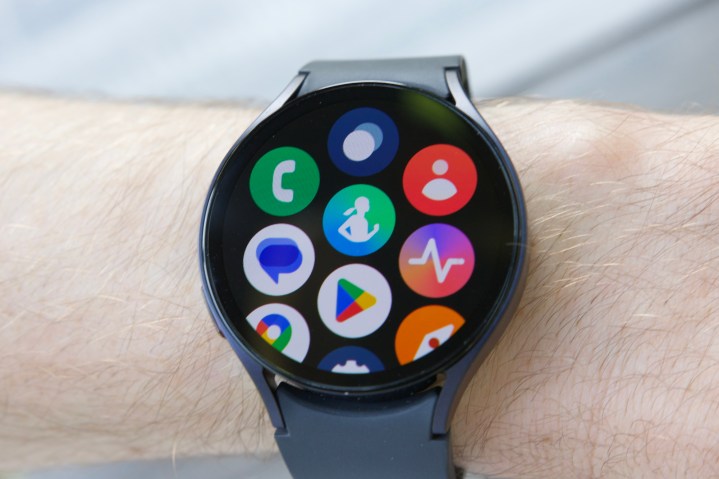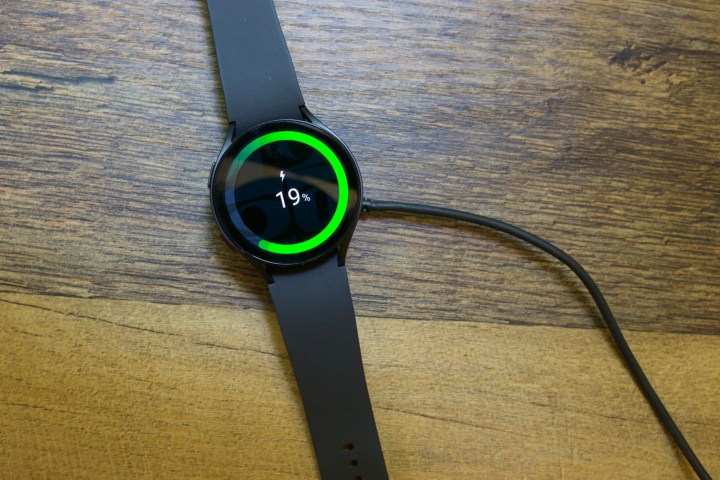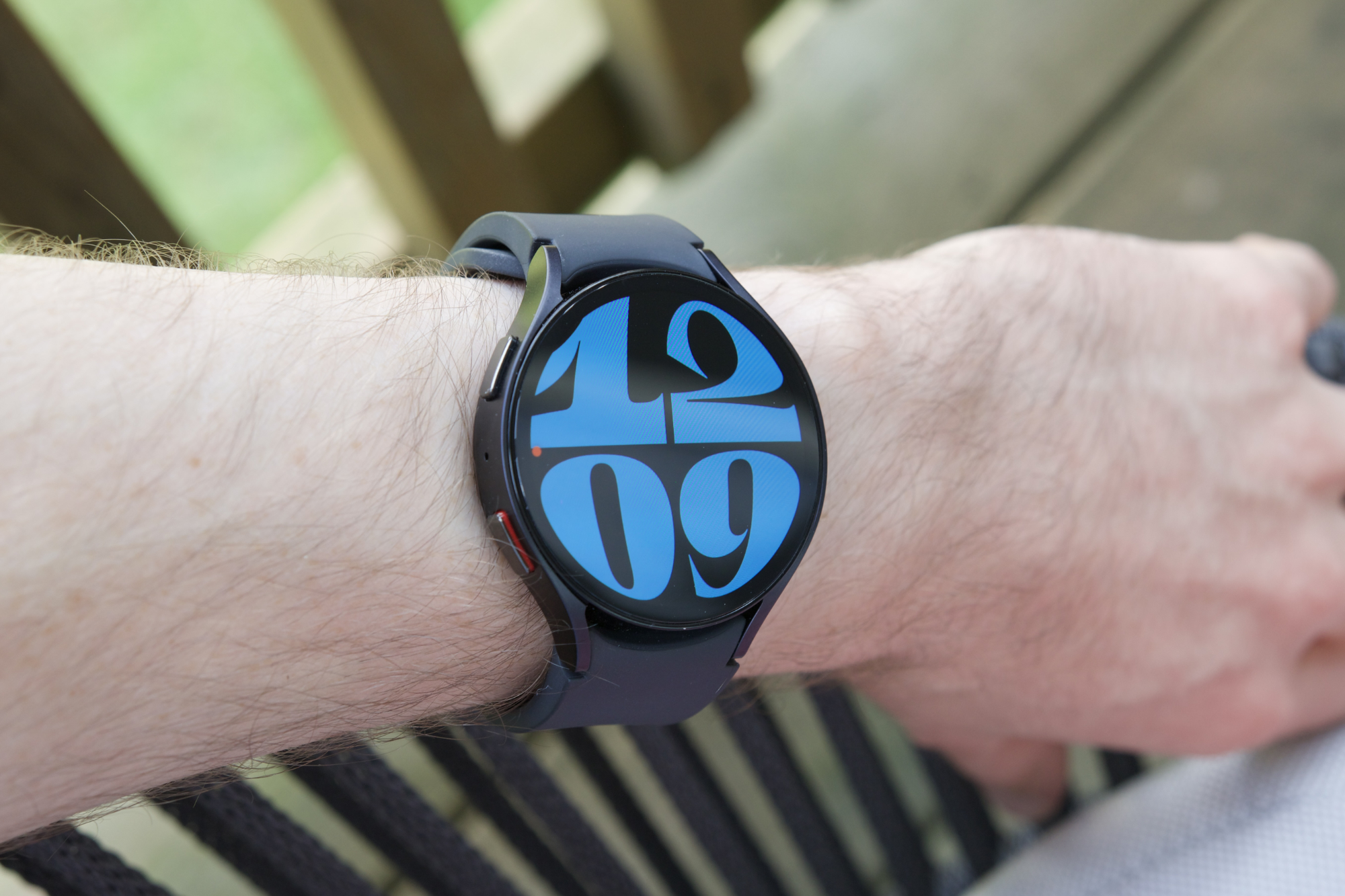The Samsung Galaxy Watch 7 might have been revealed in the shadow of the larger Galaxy Watch Ultra, but it’s still a smartwatch you can’t afford to ignore. It’s packed with top specs, a gorgeous display, and all the fitness, health, and wellness tracking you could possibly need. The design is sleek and svelte, and while there’s no Classic variant this year, the Watch 7 is still one of the best-looking smartwatches you can buy.
But a lot of those compliments also apply to the Samsung Galaxy Watch 6, last year’s Samsung smartwatch of note. At first glance, there’s not a huge amount to separate the two watches. The display and specs are similar, and even the features on offer are identical. Are there big differences, and should you upgrade? We found out.
Samsung Galaxy Watch 7 vs. Galaxy Watch 6: specs
| Samsung Galaxy Watch 7 | Samsung Galaxy Watch 6 | |
| Display size | 40mm: 1.3 inches
44mm: 1.5 inches |
40mm: 1.3 inches
44mm: 1.5 inches |
| Body size | 40mm
44mm |
40mm
44mm |
| Weight | 40mm: 28.8 grams
44mm: 33.8 grams |
40mm: 28.7 grams
44mm: 33.3 grams |
| Resolution in pixels | 40mm: 432 x 432 (453 ppi)
44mm: 480 x 480 (453 ppi) |
40mm: 432 x 432 (453 ppi)
44mm: 480 x 480 (453 ppi) |
| Touchscreen | Super AMOLED, always-on display | Super AMOLED, always-on display |
| Storage | 32GB | 16GB |
| Wireless interface | Bluetooth 5.3, Wi-Fi 802.11 b/g/n, dual-band, NFC, LTE (certain models) | Bluetooth 5.3, Wi-Fi 802.11 b/g/n, dual-band, NFC, LTE (certain models) |
| Depth | 0.38 inches (9.7 mm) | 0.35 inches (9 mm) |
| Blood oxygen sensor |
Yes | Yes |
| Accelerometer | Yes | Yes |
| Gyroscope | Yes | Yes |
| Ambient light sensor | Yes | Yes |
| Heart rate sensor | Yes | Yes |
| Barometer | Yes | Yes |
| GPS | Dual Frequency L1+L5 | Single Frequency L1 |
| Compass | Yes | Yes |
| Water/dust resistant | MIL-STD-810H, 5ATM, IP68 | MIL-STD-810H, 5ATM, IP68 |
| Battery life | 40mm: 300mAh
44mm: 425mAh |
40mm: 300mAh
44mm: 425mAh |
| Price | From $300 | From $300 |
Samsung Galaxy Watch 7 vs. Galaxy Watch 6: design
We’ll be completely honest here: These two watches are largely identical. The Samsung Galaxy Watch 6 has a sleek design with slim bezels around the all-encompassing display. The style is subtle, and even the larger size fits well on a smaller wrist. The strap is comfortable and easy to switch, thanks to Samsung’s “one click” attachment points. It sports MIL-STD-810H, 5ATM, and IP68 ratings for dust and water resistance, so it’s durable enough for the rigors of daily life. And because the Galaxy Watch 6 is those things, so is the Watch 7. They’re basically the same, though the Galaxy Watch 7 is a little thicker.
Is it time Samsung thought about mixing up the design? Well, it’s using the same design it’s been using since the Galaxy Watch 4, with only some slightly reduced bezel sizes to show for progression. It’s a beautiful style, which sugars the pill a lot, but we have to wonder how long Samsung can continue offering the same look over and over again. But, if Apple can do it with the Apple Watch, we guess Samsung can too.
Samsung Galaxy Watch 7 vs. Galaxy Watch 6: display

As above, so below: There are few changes between the Galaxy Watch 6 and Watch 7. The 40mm and 44mm case sizes come with 1.3-inch and 1.5-inch displays and 432 by 432 and 480 by 480 resolutions, respectively. Both have slim bezels around the screen, with Super AMOLED tech running the show underneath. The screens are crisp and colorful, with deep blacks and enough brightness to be seen in bright sunlight.
It’s a gorgeous display, but there’s been little change between the two devices.
Samsung Galaxy Watch 7 vs. Galaxy Watch 6: performance

The Galaxy Watch is almost always powered by Samsung’s Exynos processors, and that’s true here. The Galaxy Watch 7 is the first to get the Exynos W1000 processor, an upgrade over the Watch 6’s Exynos W930. It’s a significant change, too, and the Exynos packs five cores and a 1.6GHz clock speed.
The Exynos W930, while strong, only has two cores and a clock speed of 1.4GHz — and that gulf results in a pretty big performance gap. The Galaxy Watch 7 is noticeably faster than the Watch 6, and that means it’s so much smoother to use. The Watch 6 is no sluggard, but the Exynos W1000 powering the Galaxy Watch 7 is an utter beast.
As if that wasn’t enough, the Watch 7’s 32GB of storage is twice that offered by the Watch 6, giving you more room to download music and apps. Performance and specs-wise, the Galaxy Watch 7 has a lot to offer over its predecessor.
Samsung Galaxy Watch 7 vs. Galaxy Watch 6: software and features

You’ll find the same version of Wear OS on both of these smartwatches. Samsung uses a slightly tweaked version of Wear OS 4 with One UI 5 over the top, and it’s a solid piece of software. Sometimes, it’s a little unstable and prone to bugs, and notifications are pretty bad, but that’s going to be the case on both watches, so neither takes any advantage of that.
Samsung promises four years of software updates and five of security updates for both of the watches, though it’s worth keeping in mind that the Galaxy Watch 7 will get a year’s more support than the Galaxy Watch 6 by dint of it being a year younger.
Samsung Galaxy Watch 7 vs. Galaxy Watch 6: battery life and charging

You’ll get a different battery size depending on which case size you buy, but regardless, the Samsung Galaxy Watch 6 has good battery life. The Watch 6 will last for almost two days on a single charge, giving it more juice than previous versions. This is a significant boost in battery life and a genuine reason to upgrade if you’re using an older smartwatch. It also has 10W fast charging, doubling the previous rate.
How does the Galaxy Watch 7 compare to this? Unfortunately, it doesn’t. The Watch 7 lasts about one day on a charge, which is far below the Watch 6 and a real disappointment. Software updates did help to boost its longevity, but it’s still very much not a multi-day smartwatch. The Galaxy Watch 6 has an edge here.
Samsung Galaxy Watch 7 vs. Galaxy Watch 6: fitness and health tracking

Samsung’s smartwatches have put fitness tracking to the fore from the very start, and the Galaxy Watch 7 and Galaxy Watch 6 are excellent watches to track fitness and have added health and mental wellness tracking as well. Samsung’s unique BioActive sensor tracks your heart rate and all the usual health stats but can also perform a full body check and narrow down your weight, skeletal muscle, fat mass, and even your body water. The Watch 6 can also perform an ECG, check your blood pressure, track your stress levels, alert you of odd heart readings, and more.
The Watch 7 gets this, plus a few more features. One of them is Energy Score. Energy Score is a combination of seven different health metrics, including how well you’ve slept, training history, and heart tracking, and it sums up its estimation of your energy levels for the day. Up a lot at night, or have you been training a lot? It’ll be lower than if you’d had an uninterrupted eight hours of sleep and a restful few days without exercise. If you’ve used anything like Garmin’s Body Battery, you know what to expect. It’s a great feature, but it’s also coming to the Galaxy Watch 6, so it doesn’t necessarily give the Watch 7 an edge over its predecessor.

The Galaxy Watch 7 also introduces sleep apnea detection. It’s been FDA-authorized and checks for “potential signs of moderate to severe sleep apnea.” Also present is the AGEs Index, a metric supposed to “reflect your overall biological aging process and provide an indication of metabolic health.”
The Galaxy Watch 6 is no slouch in the health and fitness department, and for most people, it’s more than you’ll need. But if you want the most complete picture of your health and well-being, the Galaxy Watch 7 is where it’s at.
Samsung Galaxy Watch 7 vs. Galaxy Watch 6: price and availability

The Samsung Galaxy Watch 7 is currently available, and prices start from $300. The Samsung Galaxy Watch 6 is also available, but now that the Watch 7 is out, you can expect prices to drop from the original $300 price, making it a solid choice if you want to save money.
Both of these smartwatches will be easy to find. Samsung is one of the biggest tech brands in the world, and anywhere that sells smartwatches is likely to carry these. The Galaxy Watch 6 will get harder to find over time, given it’s been replaced by the Watch 7, but if previous generations are any example, then stock will be around for a while.
Samsung Galaxy Watch 7 vs. Galaxy Watch 6: verdict

Make no bones about it: The Galaxy Watch 7 offers little over the Galaxy Watch 6. The upgraded processor and new health features are about the only real additions to the formula, with the possibility of a stronger battery. There’s not a huge amount to get excited about, especially compared to the Samsung Galaxy Watch Ultra, leaving the Galaxy Watch 7 as something of a damp squib.
So, the Galaxy Watch 7 technically wins this showdown. After all, it’s the newer model, has a faster processor, and has some new features. But to be brutally honest, none of that is really that exciting. The Samsung Galaxy Watch 6 does almost everything the Watch 7 does, looks just as good, still has fast performance, and can track pretty much any exercise you need.
Is the Galaxy Watch 7 technically the better smartwatch? Yes, it’s the superior of the two. But is it worth upgrading your Galaxy Watch 6? Unless you need sleep apnea detection or the AGEs Index, absolutely not. While you’ll get some credit for trading in your Galaxy Watch 6, the additional features and upgraded processor are not worth the extra money you’ll pay. If your Galaxy Watch 6 is still purring along and your battery isn’t struggling, we recommend waiting at least another year before upgrading, as the Galaxy Watch 7 is not very different from what you already have.

Leave A Comment
You must be logged in to post a comment.